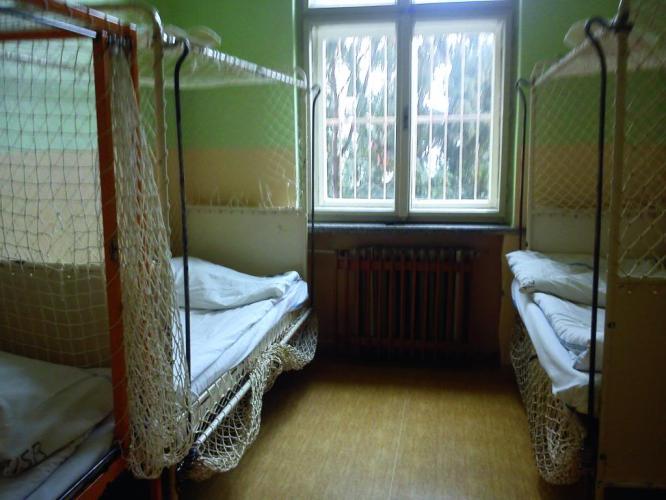6(B)(i). Kosmonosy Psychiatric Hospital
At the time of the monitoring visit, Kosmonosy Psychiatric Hospital had 29 cage beds in use,65 the highest number of any institution visited. Management denied access to the rooms in which the cage beds were located, purportedly because it was impossible to “receive relevant consent from the patients” placed in cage beds. Instead, the monitoring team met with staff and patients in the cafeteria. Staff emphasised that they did not use the term “cage” or “net beds”, but referred to them as “protective beds”, and that they are used mostly for women. They would be “insufficient” for men, said one staff member, as they could too easily damage the netting. Instead they were restrained with straps, she explained. Another staff member explained that cage beds were used for “delirious grandmas”.
The director of the institution said that 90% of the use of cage beds occurs on ward B1 (a female admission ward) and on ward B3 (a female elderly admission ward). In elderly wards, four or five women were placed in cage beds during the night, he said, due to “nocturnal confusion or delirium”. Cage beds “are great for geriatric patients and the mentally retarded: isolation or straps are much worse,” he explained. In the elderly psychiatric wards, foam side boards were reportedly used, or the beds are lowered. He reported that the admissions ward (B1) had two cage beds in one room with a glass window to the nursing station. In another ward there were six cage beds in one room. The room had a window and heating, but no means of monitoring patients from outside the room. Staff asserted that cage beds were used for agitated or distressed patients and each use is documented, giving the duration of and the reason for use. Because MDAC was denied access to any of the areas containing cage beds in the hospital, none of these assertions could be verified.
 Photo: Klatovy Hospital Psychiatric Department © MDAC
Photo: Klatovy Hospital Psychiatric Department © MDAC
Photo: Klatovy Hospital Psychiatric Department © MDAC
Photo: Klatovy Hospital Psychiatric Department © MDAC
65 As verbally reported by the Director of the institution, although this differs from the number declared in response to MDAC’s freedom of information request to the same institution at the end of 2012 where 27 were declared – see Annex 1.

